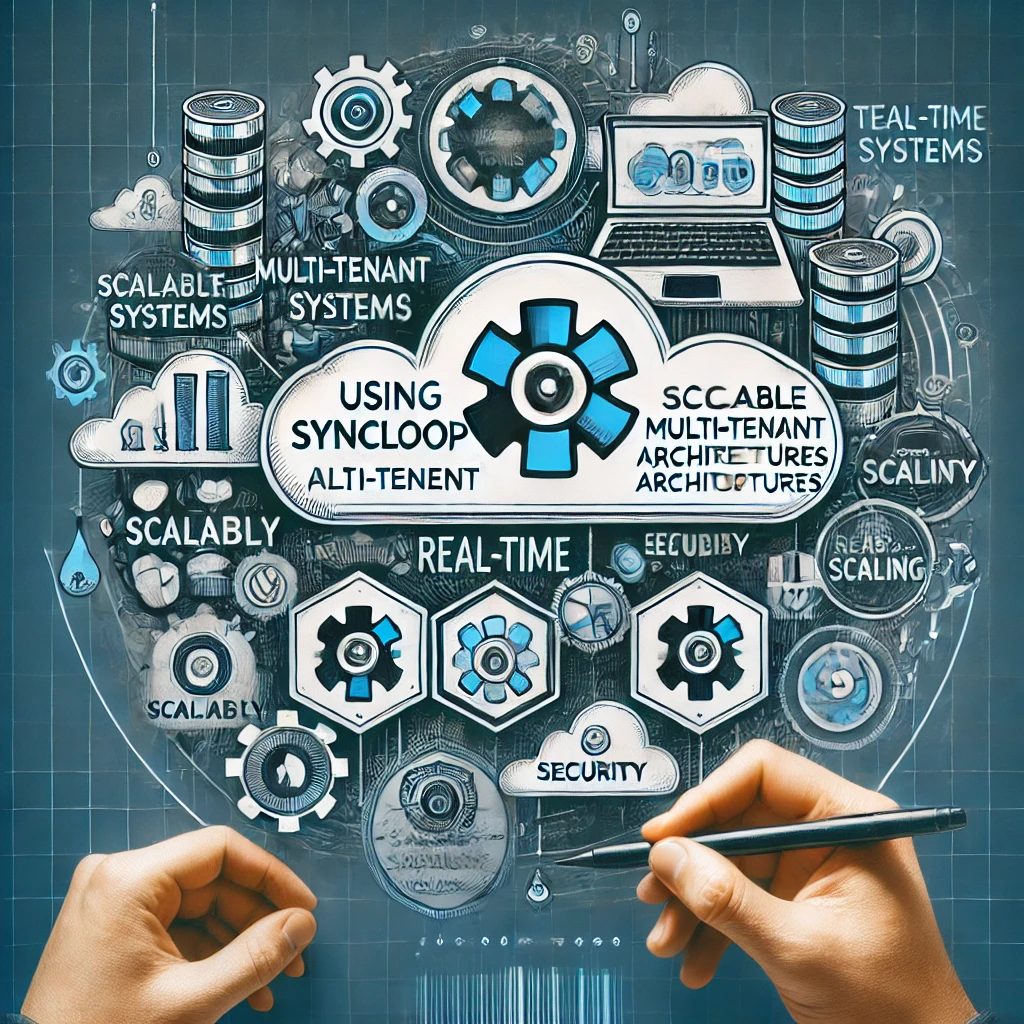Using Syncloop for Scalable Multi-Tenant API Architectures

Syncloop simplifies the development of scalable multi-tenant API architectures with tools for dynamic routing, role-based access control, and efficient resource management. This blog explores how Syncloop facilitates multi-tenant API development and offers best practices for scalability and security.
Key Considerations in Multi-Tenant API Architectures
- Tenant Isolation: Ensuring data and operations remain isolated between tenants to prevent breaches or errors.
- Customizability: Allowing tenant-specific configurations without duplicating codebases.
- Scalability: Supporting a growing number of tenants without compromising performance.
- Authentication and Authorization: Implementing robust mechanisms to identify and restrict access for each tenant.
- Monitoring and Billing: Tracking resource usage and activity for performance insights and billing purposes.
How Syncloop Simplifies Multi-Tenant API Development
1. Dynamic Routing
- Route requests to the appropriate tenant environment or database based on headers, tokens, or subdomains.
2. Tenant-Specific Authentication
- Use Syncloop’s OAuth 2.0 and token-based authentication to enforce tenant-level access control.
3. Customizable Workflows
- Design workflows that adapt dynamically to tenant-specific rules and configurations.
4. Resource Segmentation
- Isolate resources like databases, APIs, and compute instances for each tenant to ensure data security and performance.
5. Scalable Infrastructure
- Leverage Syncloop’s auto-scaling capabilities to handle varying workloads and tenant growth.
6. Role-Based Access Control (RBAC)
- Define granular permissions for tenant administrators, users, and sub-users to ensure proper authorization.
7. Real-Time Monitoring
- Track tenant-specific API usage, errors, and performance with Syncloop’s monitoring dashboards.
8. Billing Integration
- Integrate usage metrics with billing systems to automate invoicing for tenants based on their resource consumption.
Benefits of Using Syncloop for Multi-Tenant Architectures
1. Simplified Development
Syncloop’s low-code tools and prebuilt components reduce complexity in designing tenant-specific APIs.
2. Improved Scalability
Handle increasing tenant numbers and API requests seamlessly with Syncloop’s scalable infrastructure.
3. Enhanced Security
Protect tenant data with RBAC, encryption, and tenant-specific authentication mechanisms.
4. Faster Onboarding
Customize APIs for new tenants quickly without affecting existing configurations.
5. Actionable Insights
Monitor tenant activity to optimize performance and address issues proactively.
Real-World Applications of Syncloop in Multi-Tenant Architectures
1. SaaS Platforms
- Provide tenants with individualized dashboards, workflows, and usage analytics.
2. E-Commerce Marketplaces
- Enable multi-vendor support with isolated inventory, order management, and reporting for each vendor.
3. Healthcare Solutions
- Manage tenant-specific patient data and compliance configurations for clinics or hospitals.
4. Education Platforms
- Offer schools or universities separate portals for managing students, courses, and analytics.
5. Financial Services
- Isolate client accounts, transactions, and compliance reports for banks or financial institutions.
Steps to Build Multi-Tenant APIs with Syncloop
Step 1: Design for Tenant Isolation
- Use Syncloop’s dynamic routing to separate data and operations between tenants.
Step 2: Implement Secure Authentication
- Configure tenant-specific access using OAuth 2.0, API keys, or token-based authentication.
Step 3: Leverage Customizable Workflows
- Build workflows that adapt to tenant needs without duplicating codebases.
Step 4: Monitor and Scale
- Use Syncloop’s monitoring tools to track tenant usage and auto-scale infrastructure as demand grows.
Step 5: Enable Billing Integration
- Connect Syncloop’s usage metrics with billing systems for automated invoicing.
Best Practices for Multi-Tenant API Architectures
- Adopt a Modular Design: Create reusable components for tenant-specific customizations to avoid redundancy.
- Secure Tenant Data: Use encryption and isolated databases or schemas to protect data privacy.
- Implement Dynamic Scaling: Design APIs to scale automatically as tenants and workloads increase.
- Optimize Performance: Cache frequent requests and use load balancing to maintain responsiveness.
- Track Tenant Activity: Monitor individual tenant usage for insights and performance optimization.
- Document Configurations: Maintain clear documentation for tenant onboarding and API customization processes.
Conclusion
Multi-tenant API architectures require robust design and management to ensure scalability, security, and tenant satisfaction. Syncloop simplifies these challenges with tools for dynamic routing, secure authentication, and real-time monitoring, enabling developers to build efficient and adaptable APIs.
Whether managing SaaS platforms, healthcare solutions, or e-commerce marketplaces, Syncloop provides the tools to deliver exceptional multi-tenant experiences. Embrace Syncloop to optimize your API-driven applications and scale confidently with growing tenant demands.
A conceptual illustration of Syncloop-powered multi-tenant API architecture, showcasing tenant isolation, dynamic routing, and scalable infrastructure.
Back to Blogs